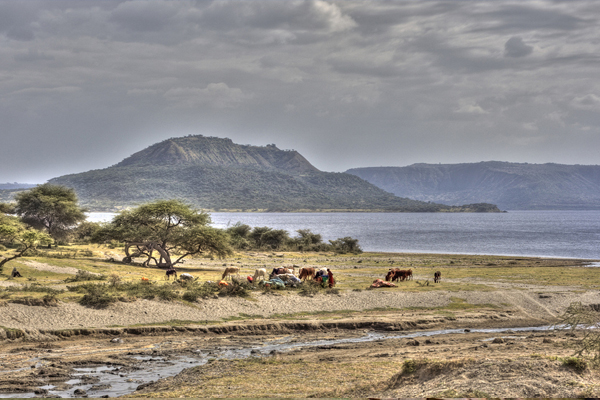Ethiopia is the land of natural contrasts from the top of the rugged Semien Mountain to the depth of the Denakil Depression which, at 20m below sea level, is one of the lowest dry land points on earth. The Great Rift Valley is a remarkable region of volcanic lakes, with their famous collection of bird-life, great escarpments and stunning views for visitors.
On top of diverse and abundant vegetation, many of Ethiopia's natural parks are mentioned as some of the last remaining untouched wilderness of Africa. With 13 major reserves, Ethiopia provides a microcosm of the entire Sub-Saharan ecosystem. Bird life and indigenous animals from the rare Walia Ibex to the shy Wild Ass roam freely just as nature intended. Ethiopia, after the rains, is a land decorated with flowers and with many more natural plants than most countries in Africa.
The Bale Mountain National Park
 Covers an area of 2,470 square kilometer, contains Ethiopia's second highest peak, Mount Batu (4,304m). It is an area where one can either walk or drive, and is one of the best places to see the endemic Semien Red Fox, the Mountain Niyala and Menilik's Bushbuck. The park, with its branching mountain air, is ideal for hiking or climbing and horses are available for long or short rides in the mountains. The one and only road through the park gives motorists some breathtaking views.
Covers an area of 2,470 square kilometer, contains Ethiopia's second highest peak, Mount Batu (4,304m). It is an area where one can either walk or drive, and is one of the best places to see the endemic Semien Red Fox, the Mountain Niyala and Menilik's Bushbuck. The park, with its branching mountain air, is ideal for hiking or climbing and horses are available for long or short rides in the mountains. The one and only road through the park gives motorists some breathtaking views.
Not far from the Bale Mountains is one of the world's most spectacular and extensive underground caves: the Sof Omer cave system. Formed by the web river as it changed its course in the distant past and carved a new channel through limestone foothills, Sof Omar is an extraordinary natural phenomenon of breathtaking beauty.
The Semien Mountain massif is one of the major highlands of Africa rising to the highest point in Ethiopia, Ras Dejen(4620m). This is the fourth highest points where night temperatures often fall below zero.
The parks shelter the afro-alpine high mountains. Wildlife includes the Walia Ibex, Ethiopia wolf, Gelada baboon as well as klipspringer, augur buzzard; verreaux's eagle and falcon also soar above this mountain. The Semien escarpments are recorded by UNESCO (the world heritage site), and are often compared with the Grand Canyon in the USA.
Lake Abiyata
Two different lakes in one park, the two lakes are both terminal lakes and their beaches are unstable, saline, and both different in character. Abiyata is shallow at about 14m with a fluctuation of water level. The steam mouth is the source of relatively fresh water, much frequented by water bird for drinking and bathing. The Lake is surrounded by gentle, grass covered slopes and acacia woodland.
Lake Shala
By contrast, surrounded as it is by steep black cliffs and peaks that reflect in its water, is the deepest lake of the Rift Valley (260m). It is exceptionally beautiful, with shores that gives a scent of mystery with their hot sulfurous springs that bubble up and flow in to the lake.
There are over 400 bird species recorded here, almost half the number recorded for the whole country. Although the islands in Lake Shala are a real bird's paradise, the birds fly to Lake Abiyata to feed. Large numbers of flamingos gather here together with great white pelicans and a wide variety of other water birds.





